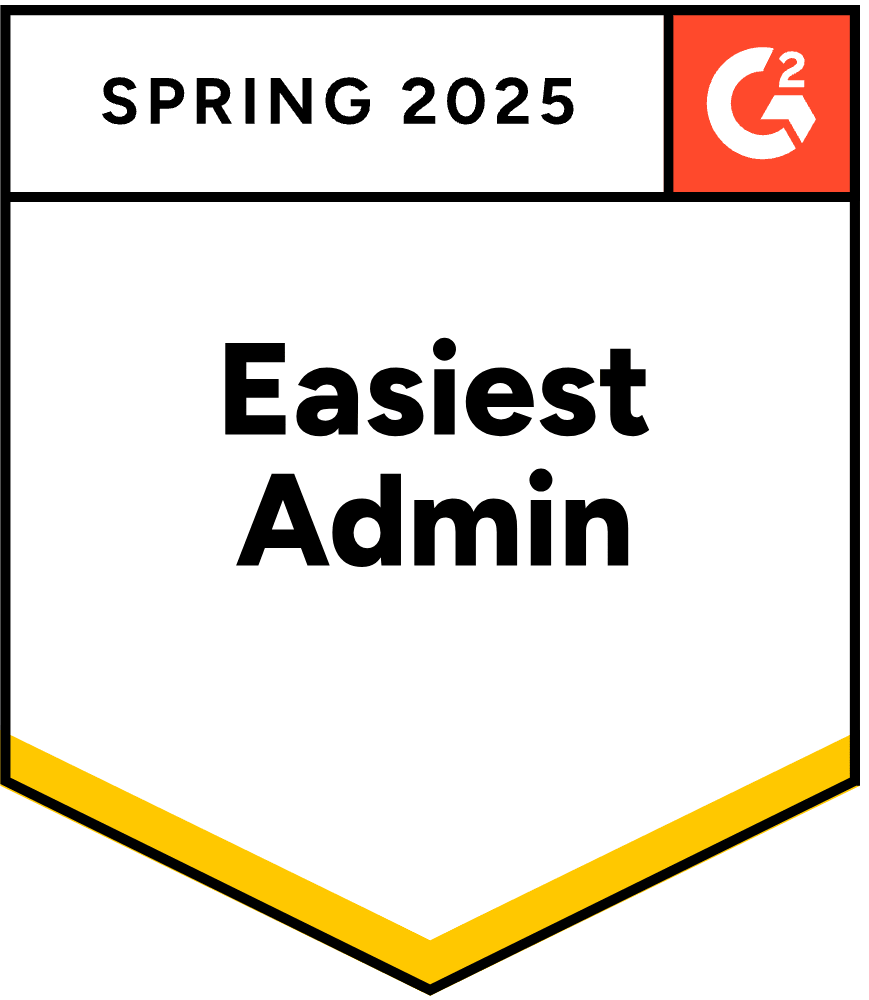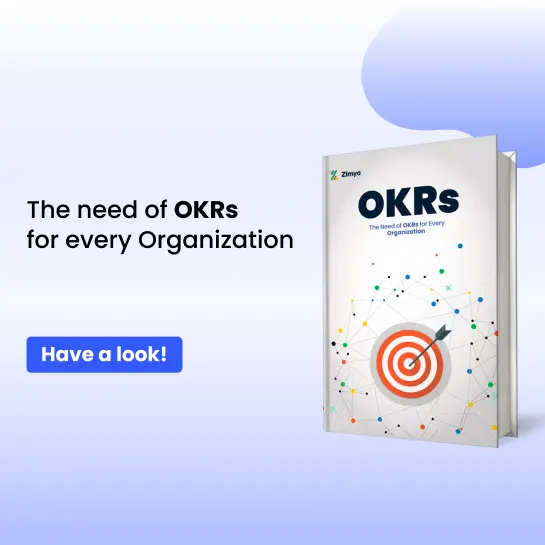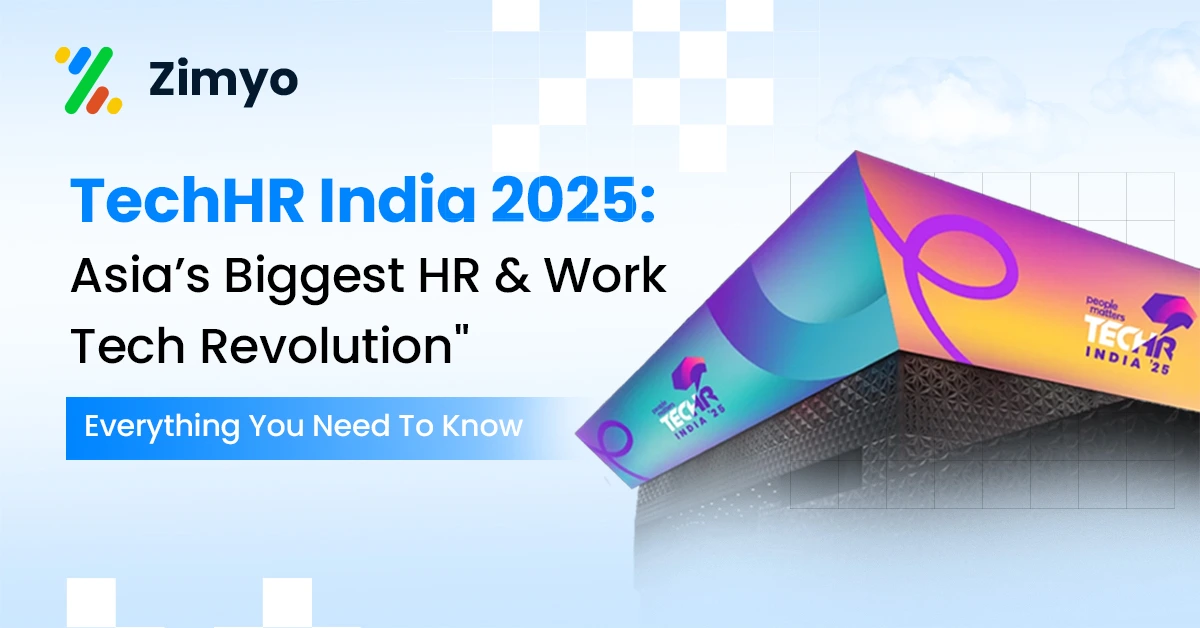India is in the midst of a defining shift. As global supply chains rethink dependence, as digital transformation becomes a key lever for competitiveness, and as the workforce itself demands more agility and localization, there’s an opportunity: to lead from within, not just adopt from outside.
The term Swadeshi has historical resonance; it means self-reliant, built at home, for home. In today’s technology landscape, Swadeshi tech is not about rejection of globalization but about designing products that deeply understand and serve Indian complexities. Such as regulatory diversity, cultural and linguistic heterogeneity, resource constraints, and dynamic labour market realities.
In HR tech, this matters even more. HR systems are not peripheral tools; they touch people’s wages, compliance, morale, performance, and wellbeing. A foreign template may cover basics but misses the local subtleties that can make or break HR operations in India.
This is where Zimyo steps in, not simply as another Indian HRMS, but as a leader in the Swadeshi movement: built from India, built for India, but with ambition and quality that can compete globally.
Why We Need Indian HRMS, Now More Than Ever
To appreciate the importance of a Swadeshi HRMS, we need to understand the current environment, the pressures, the trends, the gaps.
Complexity of Regulation & Compliance
Indian labour laws are many, overlapping, and often state-specific. Statutory obligations like PF (Provident Fund), ESI (Employee State Insurance), professional tax, various welfare duties, and income tax deductions: they differ by state, by industry, by employee profile. For any HR system, getting this wrong can lead to penalties, audits, legal exposure, and employee dissatisfaction.
Generic HR tools often assume a one-size-fits-all. But Indian HR teams need tools that can pivot for different states, sectors, and scales rapidly. That is where a local product with built-in domain knowledge has a real edge.
Diverse Workforce & Cultural Realities
India is not monolithic. From urban tech centres to remote offices, from large enterprises to micro SMBs, from multi-lingual teams to gig and contractual workers, the HR systems must handle that diversity. Leave rules, working hours, benefits expectations, employee communication styles, engagement triggers, all are culturally infused.
Foreign HRMS products might impose rigid norms (say, for annual leave, or performance cycles) that are standard elsewhere but misaligned here. Swadeshi HRMS must adapt to locally relevant workflows rather than expecting the organisation to adapt to the tool.
Demand & Growth in HR Tech
HR technology is growing fast in India. According to an IMARC Group report, India’s HR technology market was worth about USD 1,120 million in 2024, and is projected to reach about USD 2,300 million by 2033, growing at a CAGR of ~7.9%.
This growth is being driven by:
- Businesses digitizing HR operations (payroll, attendance, performance management).
- Increasing adoption of cloud-based HR tools.
- Rising expectation for tools that improve employee experience.
- The globalisation of Indian companies who require tools that can scale across geographies or international clients.
Tech & Talent Trends: AI, Analytics, Upskilling
HR is no longer just about tracking attendance or payroll. The new frontier includes predictive analytics (for hiring, retention, talent risk), AI-assisted workflows, automation of repetitive tasks, tools for employee engagement and wellbeing, and platforms for continuous feedback. A recent Capterra India survey found that organisations using AI features in HR software reported 57% improvement in recruitment outcomes, versus 44% for those not using AI. Similarly, employee/candidate experience improved for 50% of AI-enabled organisations versus 41%.
All this means that Indian HRMS must be not just locally compliant but technologically current, integrating AI, analytics, cloud, scalability.
Zimyo HRMS, Journey of Atmanirbhar: From Idea to Leadership
To understand the depth of Zimyo’s leadership, it helps to trace how it evolved, what choices were made, and how its values shape its product.
Origins & Product Evolution
Zimyo HRMS was founded in 2018 to address the gap between what HR leaders needed and what existing tools delivered. The founding team saw first-hand the daily friction: payroll woes, compliance nightmares, low employee engagement, manual processes, and lack of tools that spoke Indian HR language.
Over time, Zimyo expanded beyond payroll to include dozens of modules: leave & attendance, performance & appraisals, engage (communication), feedback/surveys, mood metrics, resource/time tracking, etc. Features like “Mood-o-meter” and “Engage” (a team collaboration messaging app) are examples of modules built for current workforce expectations.
Scale & Adoption
Some of Zimyo’s current pedestal include:
- 2,500+ customers globally
- 750,000+ users
- Presence in 40+ countries
- Average rating over 4.5+ on global review platforms
These numbers reflect both demand and trust, from small businesses to larger enterprises, domestically and abroad.

Awards, Recognition & Trust Indicators
Zimyo has received several awards and recognitions including:
- Forbes India DGEMS 2024 Top 200 Companies
- Highest User Adoption in APAC – 2025
- “High Performer, Asia-Pacific” badges on G2 (2023-24)
- TiE50 award for innovation in automated HR processes
- “Best SaaS Product of the Year” in HRMS category by Entrepreneurs Media Excellence Award
- Great Place to Work certification
These help signal leadership credibility and not just claims, but validation from users, peers, and markets.
What Makes Zimyo a Convincing Swadeshi HRMS
Talking about Swadeshi is easy; doing Swadeshi well is harder. So to achieve that here are the features, design decisions, and practices that make Zimyo convincing as a home-grown leader.
Deep Compliance & Localisation
- Built-in compliance for Indian laws: payroll, tax, state-wise calculations, statutory deductions.
- Support for regional variances (state professional tax, different leave rules etc.).
- Frequent updates to reflect new laws or changing regulations.
Modularity + Flexibility
- Rather than forcing one standard workflow, Zimyo offers modules (engagement, performance, time-tracking, etc.) so organisations can adopt what they need.
- Flexible configuration so HR teams can map workflows as per their existing policies.
Employee-centric Experience
- Self-service portals for employees: updating information, applying leaves, etc.
- Tools for engagement: surveys, feedback loops, mood tracking, recognition. These are increasingly expected in modern workforce.
- Multilingual or at least culturally sensitive UI/UX, communication styles etc.
Usability, Speed & Support
- Onboarding support and good documentation (“Guides” etc.). Zimyo provides a “Helps” / “Guides” section to help first-time users.
- Strong local support, understanding of Indian customer feedback and iteration.
Technology & Modern Trends
- AI & analytics features: leveraging intelligence for recruitment outcomes, for anticipating attrition risk etc. The market trend shows clear gains in organisations that use AI in HR processes.
- Cloud platforms and scalability to serve organisations across geographies.
Trust, Credibility & Value
- Affordable pricing (relative to global alternatives) for SMBs.
- Transparent communication around features and updates.
- Strong reviews and high ratings.
Zimyo’s Customer Case Studies & Outcomes
Customer | Challenge(s) | Outcomes / Metrics |
Bajaj Capital (Financial Services, India) | Manual payroll effort, lack of transparency in HR workflows, inefficient HR processes. | • 90% reduction in manual effort for payroll Quote: “We wanted a solution that understands the Indian business mindset — the complexities of compliance, payroll, and people management across states. This Indian HRMS not only simplified our operations but also gave us the agility to scale.” — Head of HR, Bajaj Capital |
Chintan (NGO, India) | Heavy paperwork, scattered data, slow payroll & recruitment, difficult expense management. | • 80% reduction in payroll costs Quote: “The client and backend IT team are very active and communicative about new features and quick support whenever issues arise.” — HR Admin, Chintan |
SlideTech Systems (Technology) | Need to scale HR operations, improve processing time, reduce data lag. | • 70% reduction in payroll processing time Quote: “Me and my whole team want to give a 4.8-star rating to the complete team. I would suggest other companies leverage the automation capabilities to enhance their HR processes.” — Sr. Manager HR, SlideTech Systems |
Sarovar Hotels (Hospitality, India) | Large, distributed workforce, complex shift management, and high manual HR workload. | • 80% reduction in payroll costs Quote: “Since day one, the platform has provided us with the best experience. Our payroll processing has become smooth and efficient, and we’ve seen massive cost savings. It’s the best HRMS for simplifying complex HR challenges.” — HR Manager, Sarovar Hotels |
Ability Engineering (Manufacturing) | Scaling challenges, payroll errors, heavy manual HR load. | • 50% reduction in payroll processing time Quote: “Our payroll system now runs smoothly. The software is user-friendly, and no extra training is required to get familiar with it. We are fully satisfied.” — HR Head, Ability Engineering |
Virgin Active India (Fitness & Wellness) | Tedious document management, manual payroll, oversight in leave processes, lack of timely reminders. | • 80% reduction in manual operations Quote: “It’s a versatile and user-friendly HR system covering most operational areas with ease and clarity.” — Sr. HR Executive, Virgin Active India |
Current HR Tech Trends & How Zimyo Aligns
To remain a leader, an Indian HRMS cannot rest on current product strengths alone. It must anticipate what HR tech is demanding right now, and what will demand in near future. Here are the key trend areas, with how Zimyo’s positioning matches or could match them deeper.
Trend | What HR Teams Want | How Zimyo Aligns / Could further align |
AI / Predictive Analytics | Better candidate matching, attrition prediction, workforce cost forecasting, automated compliance alerts. | Zimyo already offers features in recruiting, performance. Potential to expand predictive dashboards for compliance and people analytics. |
Employee Experience & Engagement | Continuous feedback, recognition, wellbeing surveys, mood tracking, flexible working, more human-centric interactions. | Existing features like “Engage”, mood meter, feedback loops. Opportunity to deepen into wellbeing metrics, hybrid-work tracking, mental health. |
Remote / Hybrid Work Tools | Time tracking across locations, collaboration tools, performance evaluation in hybrid settings. | Modules like timesheets & collaboration (Engage etc.) are relevant; continuous improvement required to support remote work dynamics (e.g. asynchronous workflows, location-agnostic compliance). |
Integration & Ecosystem | HR tech needs to integrate with payroll, accounting, tax, learning platforms etc. Less silo, more connected workflows. | Zimyo is modular; further integrations (APIs, partner ecosystems) will strengthen stickiness. |
Upskilling, Learning & Retention | As technologies shift (AI, generative tools), organisations need tools to upskill, track learning paths, retain critical employees. | Zimyo has performance / feedback modules; could push more in learning journeys, skill gap analyses, internal mobility tracking. |
Data Security, Privacy & Trust | Especially with employee data: payroll, performance, personal data. Local data residencies, compliance with data protection laws. | Being India-based gives some advantage; ensuring compliance with Indian data protection developments, transparent policies, good security certifications will reinforce trust. |
What Leadership Looks Like in Practice
To assess real leadership, we must move from features to outcomes. What have customers actually gained? What metrics improve? What risks have they averted? While specific case data may be proprietary, these are the kind of stories that Zimyo can use (or may already have) to demonstrate its impact.
- Reduced Payroll Errors & Faster Payroll Cycles: Manual processes are slow, error-prone. Customers who move to automated payroll plus built-in compliance see fewer mistakes, fewer queries, faster turnaround.
- Time Savings for HR Teams: Time formerly spent doing manual forms, reconciling attendance, chasing statutory filings becomes hours saved each month. This allows HR teams to focus more on culture, engagement, strategic work.
- Improved Compliance & Risk Management: Clean audits, less statutory penalties, ability to respond quickly to changes in regulation (e.g. last minute government circulars).
- Better Employee Satisfaction & Engagement: Employees seeing transparency in appraisal, feedback, recognition; being able to access tools easily; less friction in daily HR interactions.
- Scalable Growth: For companies expanding across states or borders, being able to replicate HR workflows, stay compliant, maintain consistent experience across geographies.
If possible, including quantitative data (e.g. percent time saved, reduction in payroll errors, improvement in employee retention) helps add credibility.
Measuring Zimyo’s Leadership, Where It Stands & What Comes Next
Let’s take stock of where Zimyo currently stands in the leadership journey, and what levers lie ahead to deepen leadership.
Strengths
- Traction: 2,500+ customers, 750,000+ users across 40+ countries.
- Recognition: Forbes India DGEMS 2024 Top 200 Companies, G2 badges in Asia Pacific, TiE50 award, “Best SaaS Product” and more.
- Product breadth: numerous modules, expanding from payroll to engagement, performance, analytics.
- Local reliability and support: Indian company, Indian support teams, responsive to local regulation, customer feedback, uses local offices.
- Exceptional Customer Support: Zimyo provides excellent customer support during onboarding and afterwards. Resolving to customer issues as quickly as some within in the matter of few hours.
Challenges & Opportunities
No leadership path is without challenge. Key areas to address or double down on:
- Staying ahead of regulatory complexity: Indian regulation evolves, court rulings, state amendments, central/state laws. An IndianHRMS must keep up not just in payroll & compliance, but also in data protection laws and labour regulation shifts.
- AI ethics, fairness, transparency: As AI features become more powerful (e.g. hiring or performance predictions), ensuring the models are fair, explainable, and unbiased will be critical. Users increasingly expect transparency about how decisions are made.
- Scalability & internationalization: Serving 40+ countries is already impressive; but scaling into markets with different regulatory, cultural, language demands will require localization, partnerships, and possibly new product variants.
- Employee wellbeing & hybrid work culture tools: Tools for remote/hybrid team management, mental health support, flexible benefits, adaptability, to keep up with evolving employee expectations.
- Data privacy & trust: As Indian data protection law (e.g. Personal Data Protection Bill) and global standards evolve, ensuring compliance, robust security, data residency, etc., is essential.
What True Swadeshi Leadership Means: Vision & Promise Towards Being Atmanirbhar
To lead in Swadeshi HR Tech is to embrace a promise, not just to meet the needs of today, but to shape the HR future of India.
Here are elements of that leadership promise:
1. Empowering Indian HR Professionals
Tools should relieve HR of tedious compliance/manual chores so they can do more strategic work: building culture, upskilling staff, guiding leadership on people growth.
2. Supporting Formalisation & Growth of MSMEs
India’s MSME sector is huge, often under-served by enterprise-grade tools. Affordable, well-designed HRMS platforms can aid formalization of hiring, payroll, compliances, thereby boosting productivity, legal safety, and employee welfare.
3. Building for Global Competitiveness
Indian startups and companies are increasingly global. A homegrown HRMS which scales well, supports multi-country operations, but retains sensitivity to Indian HR DNA, gives local companies a competitive advantage versus relying on foreign tools not tuned for India.
4. Catalysing Innovation & Ecosystem Growth
Leadership means product maturity, but also building ecosystem: advisory communities, partner networks, integrations, case studies, thought leadership. Zimyo can help set standards, publish data / benchmarks, and be an anchor for the Indian HRMS community.
5. Sustainability & Ethical Growth
Growth with responsibility: ensuring employee data privacy, ethical AI, customer support, maintaining trust. Also, pricing models that are fair, ensuring customers across scales are served, not just top paying ones.
The Path Forward: How Swadeshi HR Tech Can Accelerate India’s Work Revolution Towards "Made in India"
India’s workforce is transforming faster than ever. From bustling tech hubs to rural enterprises embracing digital tools, the line between “traditional” and “modern” work is fading. Yet one truth remains that India’s future of work must be built on Indian innovation.
For decades, HR technology was seen as something to import, a plug-and-play model from the West. But Indian organizations have different realities. The sheer diversity of the workforce, evolving labour codes, multilingual teams, and region-specific compliance requirements demand solutions that are culturally and contextually aware.
This is where the new generation of homegrown HR technologies steps in, not as imitators, but as innovators. These platforms are blending Indian insight with global ambition, creating products that resonate with the everyday challenges of our workplaces.
To accelerate this movement, a few key shifts are essential:
- Investment in indigenous R&D: Building from the ground up, not just localizing global tools.
- Policy support and digital inclusion: Encouraging Indian businesses, especially SMEs, to adopt technology confidently.
- Focus on employee well-being and inclusion: HR tech must go beyond data to truly enhance the human experience of work.
- Global collaboration, Indian foundation: India’s HR tech future will thrive when homegrown innovation competes and collaborates on the global stage.
The promise of Swadeshi HR technology isn’t just about being made in India. It’s about being made for India, yet capable of inspiring the world.
Conclusion
India’s growth story has always been powered by its people; ambitious, resilient, and endlessly adaptable. As organizations evolve, technology must rise with them and not to replace human connection, but to empower it.
The next chapter of India’s work revolution will belong to those who marry empathy with innovation. And that’s where homegrown HR solutions have an edge because they understand the heart of Indian business, the rhythm of its workplaces, and the aspirations of its people.
This movement is not just about software; it’s about self-reliance, pride, and purpose. It’s about proving that the best technology doesn’t always come from abroad, instead it can emerge right here, from the soil that raised the world’s most dynamic workforce.
The Swadeshi spirit in HR tech isn’t merely a reflection of “Make in India.”
It’s a statement that says:
“We can build world-class innovation without losing our local soul.”
And as this ecosystem matures, it will not only shape India’s future of work but also redefine what it means to lead, globally, from home.
FAQs
What does ‘Swadeshi HRMS’ mean?
‘Swadeshi HRMS’ refers to homegrown, India-built HR software solutions designed to meet the specific needs of Indian organizations, from compliance to payroll and employee engagement.
Why is Indian HR tech gaining global attention?
Indian HR platforms combine affordability, deep local understanding, and cutting-edge innovation, allowing them to compete with global SaaS players while addressing unique workforce dynamics.
How are Indian HRMS platforms different from international ones?
Indian HRMS tools are tailored for local compliance laws, multi-state payroll structures, and diverse workforce needs, which global platforms often find difficult to adapt to.
What challenges do Indian companies face without a local HRMS?
They often deal with compliance errors, manual data entry, fragmented systems, and a lack of real-time insights, all of which slow down people management and decision-making.
How is Zimyo contributing to India’s HR tech revolution?
Zimyo represents the new wave of Indian HR innovation, providing an employee-centric platform that simplifies HR operations and empowers organizations through automation and data-driven insights.








